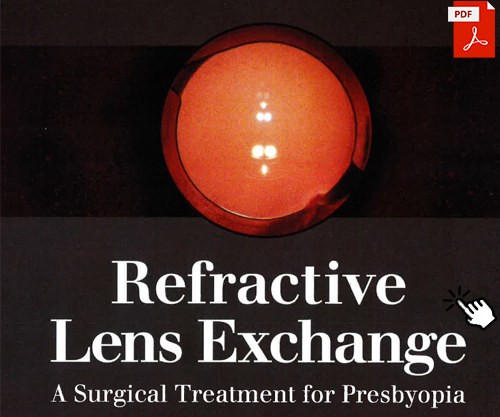Hyperopia
Farsightedness (Hyperopia)
Farsightedness is a refractive error (Glasses Prescription/Contact lens prescription) that makes people blurry up close and in many cases, in distance too. This common vision refractive error is further detailed by Dr. Gulani and his advanced diagnostics to better study and then uniquely approach with a custom designed surgery for your individual eyes.
In this continued desire to steer colleagues away from “cookie-cutter” surgery, he has given birth to KLEAR ™ which involves over 40 techniques and infinite permutations to help people see without glasses by using breakthrough technologies (including Lasers, Lens Implants, etc.) singly and in sequence using GPS™ therewith custom-tailoring surgery to each patient’s eyes to even aim for vision beyond 20/20.




After advanced diagnostics and clinically evaluating your eyes, Dr.Gulani classifies hyperopia into:
- Mild
- Moderate
- Extreme
Additionally, he looks for causative anatomy to further break it down to:
- Corneal (when shape of your cornea is flatter than normal)
- Axial: When length of your eye is shorter than normal
- Lenticular (when your natural crystalline lens contributes to it)
Also, he further divides Hyperopia into:
- Latent (Hidden, most commonly due to overacting muscles)
- Manifest
*Amblyopia (Lazy Eye) could be caused due uncorrected hyperopia (usually moderate to extreme kind) and limit vision potential in Lasik and Cataract candidates.
Symptoms

As one of the vision errors, nearly 5-10% of the population in the United States is diagnosed with Hyperopia (farsightedness). Patients with farsightedness may not notice the signs until their near vision starts to look fuzzy. The inability to clearly see items near the eyes is the most notable sign of being farsighted. Nevertheless, hyperopia that isn’t obvious yet or has been neglected does sometimes result in eye fatigue, also referred to as asthenopia. The extra strain on the eyes that comes from performing certain tasks, such as studying, playing video games, or using the computer, can trigger headaches, burning and sore eyes, and stiffness in the shoulders and neck.
Causes
It is common for hyperopia to run in families. In most cases, hyperopia is present at birth, though children may eventually overcome their farsightedness as their eyes continue developing. This condition is often confused with presbyopia. Both conditions affect near vision, but they are separate conditions. Presbyopia refers to the decline in near vision due to the hardening in the eye’s lens and occurs as we age, generally developing in men and women aged 40 years or more.
Treatment
Using Advanced Diagnostics and years of clinical acumen, Dr.Gulani first determines what kind of astigmatism you have then picks among the full spectrum of surgical and technological options to design a procedure to best correct it and can even help patients with extreme Astigmatism using technologies and techniques he has helped pioneer and uniquely design combination surgeries.
In many cases, vision refractive errors (glasses contact lens prescriptions) may co-exist together (i.e. astigmatism with nearsightedness). Having taken even a so called routine vision disorder such as astigmatism and further studied it as regular, against the rule, or irregular, Dr. Gulani then sets about to apply KLEARTM involving over 20 laser techniques and nearly 40 vision corrective surgeries with unlimited combinations like an artist to custom-design a surgery and technology for your unique eye and vision error aiming for the best vision outcome he can.
We welcome you to set up your personal consult with Dr. Gulani so you can understand your eyes like never before and participate in selecting your best surgical option to then begin your Gulani Vision Experience.






